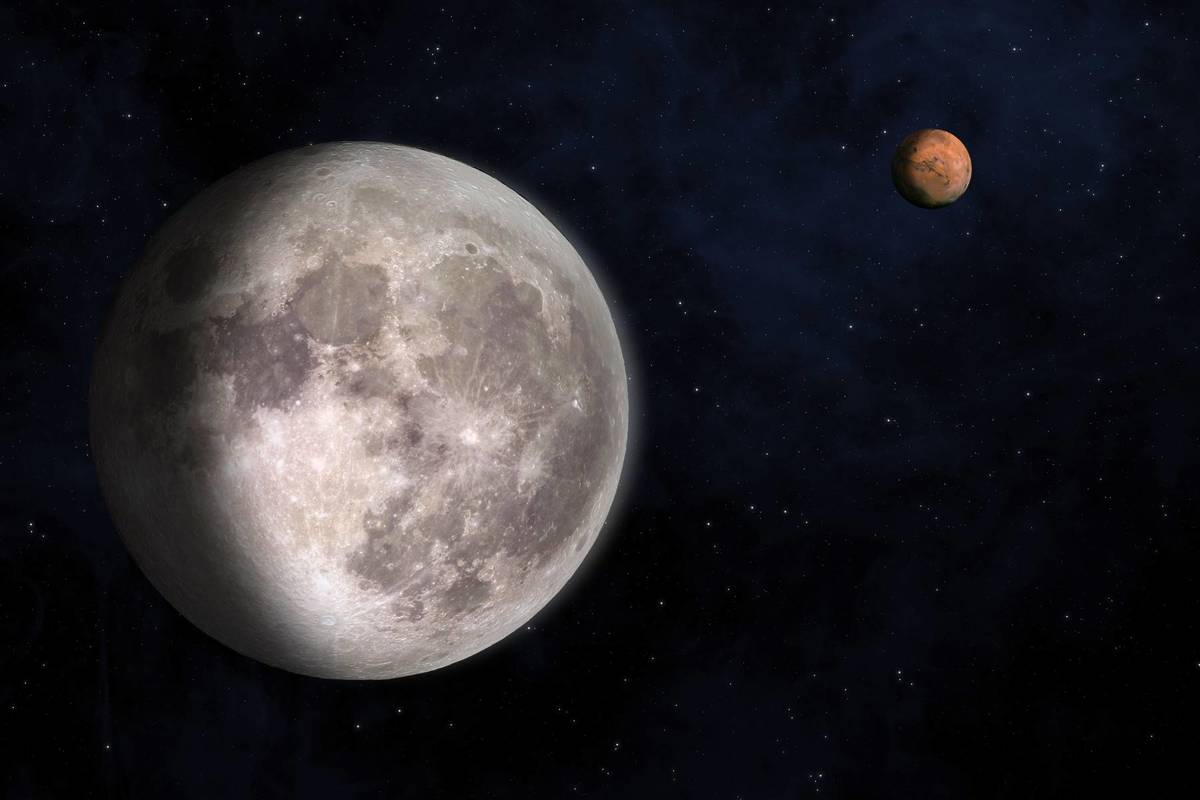A remarkable 2.35 billion year old meteorite found in Africa in 2023 has opened a new window into the Moon‘s volcanic history, filling a gap in our understanding of how Earth’s closest neighbour evolved over billions of years. The meteorite, officially named Northwest Africa 16286 (gets award for catchiest meteorite name!) represents the youngest basaltic lunar meteorite ever discovered on …
Read More »Tag Archives: moon
See the Moon Team Up With Two Distant Planets
On the night of July 15, a striking conjunction of the moon, Saturn, and Neptune will unfold in the eastern sky, offering stargazers across the United States a chance to witness three celestial bodies clustered tightly together. As reported by Space.com, the event places all three within just a few degrees of each other — a rare optical alignment that …
Read More »The precursors of life could form in the lakes of Saturn’s moon Titan
NASA scientists have found that cell-like compartments called vesicles, needed to form the precursors of living cells, could form in the lakes of Titan, Saturn’s largest moon. These lakes and Titan‘s seas are filled with liquid hydrocarbons like ethane and methane rather than water. And though we know water is a key ingredient of life on Earth, astrobiologists have theorized …
Read More »Moon phase today explained: What the moon will look like on July 14, 2025
Interested in why the moon looks like it does tonight? Wonder no more, here’s what you need to know about tonight’s moon, as it moves through the lunar cycle. The lunar cycle is a series of eight unique phases of the moon’s visibility. The whole cycle takes about 29.5 days, according to NASA, and these different phases happen as the …
Read More »The Moon and Mars Are Meeting in the Sky—Here’s When and Where to Watch
This July, skywatchers across Southern California are in for a remarkable sight as the crescent Moon and Mars converge in a rare astronomical pairing. According to National Geographic’s July 2025 night sky guide, this event is part of a particularly rich calendar of cosmic activity that includes meteor showers, supermoons, and other visible planetary movements. Among these, the Moon–Mars conjunction …
Read More »“These Tools Could Rewrite Moon History”: NASA Unleashes High-Tech Gear to Map Lunar Subsurface and Hunt Hidden Minerals
IN A NUTSHELL 🚀 NASA’s Artemis mission will deploy advanced tools to explore the moon’s south polar region. 🔍 The Lunar Terrain Vehicle (LTV) will carry two instruments to detect minerals and map the lunar surface. 🛰️ The Ultra-Compact Imaging Spectrometer will orbit the moon to assess surface water and human impact. 🌑 These efforts aim to uncover lunar secrets …
Read More »Don’t miss the moon pass close to Saturn and Neptune on July 15
Saturn, the moon and Neptune will be within 5 degrees of each other in the night sky on July 15. (Image credit: Chris Vaughn) Heads up stargazers! The moon will rise close to Saturn and the ice giant Neptune in the eastern sky on the night of July 15, close enough to be seen together in a pair of binoculars! …
Read More »When To See The Moon And Saturn Pair Up On Tuesday Night
The moon and Saturn, as seen from Kuwait City on October 14, 2024. (Photo by YASSER AL-ZAYYAT/AFP … More via Getty Images) AFP via Getty Images Look to the east shortly before midnight on Tuesday, July 15, and you’ll see two of the most beautiful objects in the solar system shine together. A waning gibbous moon, by now rising late …
Read More »The Crescent Moon And Mars Will Appear Side By Side This Month
buradaki via Shutterstock. Space, the final frontier… The skies have fascinated and shaped civilizations ever since we first set foot on this planet we call home. And even though science keeps advancing at lightning speed, everything that happens above our heads never ceases to amaze us. This month, a series of celestial events will make July feel more magical than …
Read More »The Perseids are coming — here’s how to watch the glorious meteor shower before the moon ruins the show
The annual Perseid meteor display is one of the best-known and commonly observed meteor showers in the Northern Hemisphere. But this year, if you want to enjoy the show, it’s best to get in early. The Perseids will be active from Thursday, July 17, through Saturday, Aug. 23 and will peak this year on Aug. 12 and 13. But the …
Read More »








